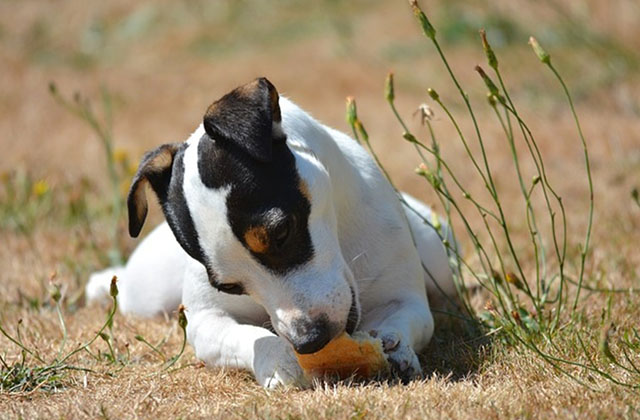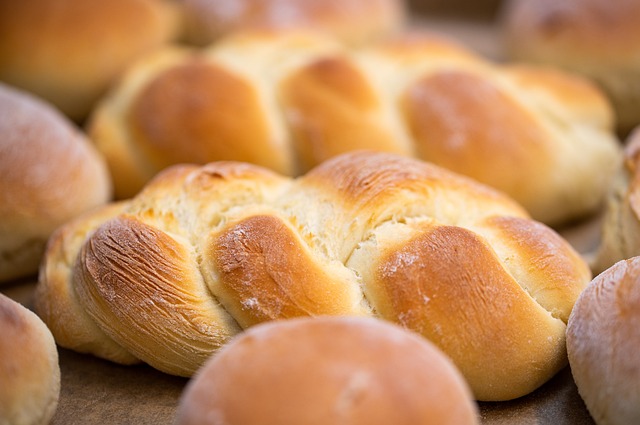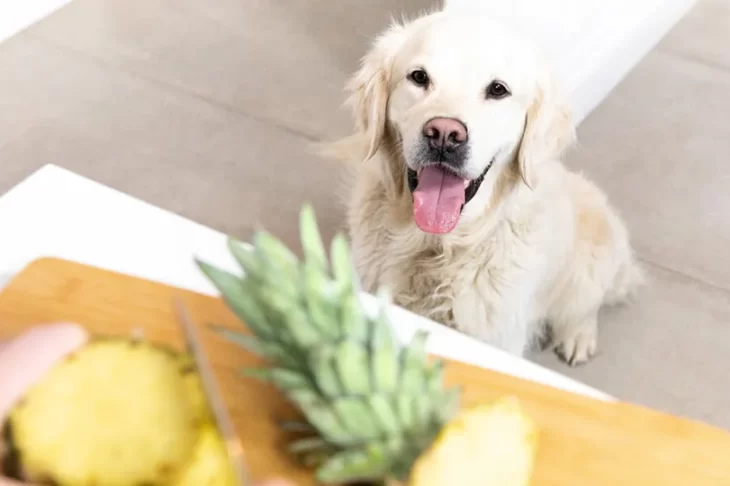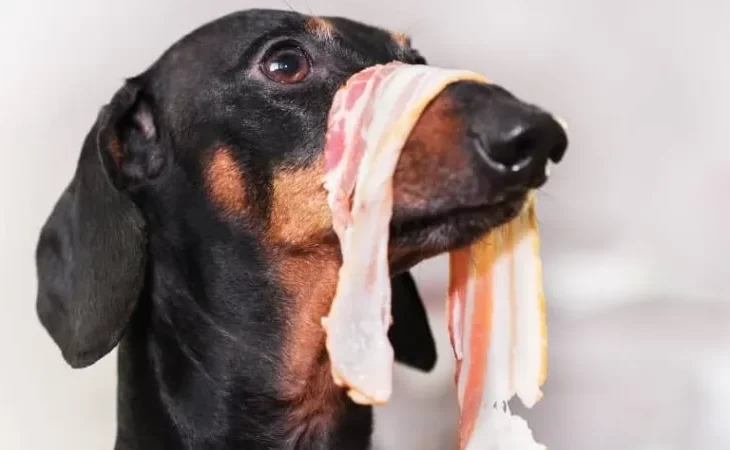
Can Dogs Eat Bread? Read the Ultimate Guide
The short answer to the question “can dogs eat bread?” is yes. Similar to how humans can safely consume bread in moderation, dogs can do the same. As long as they don’t have any allergies, dogs can usually eat plain white or wheat bread without getting sick.
Please read on for more detailed information.
Table of Contents
Is It Safe for Dogs to Eat Bread?
As long as you only offer plain white or wheat bread, bread is generally safe for dogs to eat. If you’re sharing a slice with your pooch, be sure to avoid breads containing these ingredients:
- Nuts: Dogs are especially toxic to macadamia nuts. Additionally, all nuts are high in fat, which can cause pancreatitis in your pet.
- Despite the fact that banana bread is a delectable treat, chocolate is frequently served with it. Keep your dog’s paws away from this tasty treat.
- Raisins – Don’t invite your dog to breakfast, but thick slices of bread sprinkled with raisins make excellent toast in the morning. In dogs, raisins can rapidly result in kidney failure.
- Onions and garlic – Adding onions and garlic to your dog’s already unpleasant dog breath is not a good idea. What makes bad breath even worse? Garlic and onions can kill your dog’s red blood cells, which results in anemia.
- Xylitol: Be wary of dessert breads or breads made with peanut butter that have been sweetened with xylitol. This artificial sweetener may result in dangerously low blood glucose levels and even liver failure.
The dough should be avoided when your dog is present if you enjoy baking your own bread from scratch. While you’re away, your dog can easily scarf down your bread dough, creating the ideal environment for the bread to continue to rise and expand in her stomach. The ethanol released by the yeast is the real problem, but rising bread dough can cause stomach bloating. As ethanol enters your dog’s bloodstream, she may experience alcohol poisoning very quickly. Be aware of these signs, which will appear anywhere from 30 minutes to 2 hours after your pet ingests bread dough:
- Elevated heart rate
- Unproductive retching and vomiting
- Distended abdomen
- Neurological depression
- Hypothermia
- Low blood pressure
- Seizures
- Unsteady gait
- Respiratory failure
- Weakness
- Coma
You should get veterinary care as soon as you can if you accidentally eat bread dough.
Like any special treat, bread should only be given in moderation to prevent your dog from gaining weight.

The Benefits of Bread
For more than 10,000 years, bread has been a regular part of our lives. In actuality, bread is a staple of every nation’s culinary culture. Its use has historically stood for prosperity and peace, and many religious practices even incorporate it.
It was used to feed the masses to survive, and we discovered it buried with mummified remains. But compared to the ground grains of ancient times, modern bread has come a long way. It remains a significant component of our diets, though.
Today, we consume breads such as pizza crust, bagels, croissants, tea breads, whole-grain breads, and plain white breads, to name a few. The nutritional value of foods depends on the ingredients used, but bread has no nutritional value for dogs (aside from the unbridled joy they experience when we give them our food).
Offering bread to your dog does have some advantages, though. The advantages that your dog might derive from consuming a small amount of bread are listed below.
It Soothes An Upset Stomach
White bread in moderation can be consumed by dogs who have IBS or stomach problems. These dogs experience less pain and discomfort thanks to the high starch content, which absorbs the irritating gastric acids. It only takes a quarter of a standard slice to alleviate the symptoms, but you should ask your veterinarian for advice on serving sizes.
It Pads Indigestible Foreign Objects
Bread binds or pads swallowed foreign objects, such as pointy bone fragments or indigestible objects, allowing them to pass through the digestive tract. Bread can aid your dog’s digestion of small pieces, though this is not true for all foreign objects or fragments of bone. For advice on doing this with bread, always consult your veterinarian.
It Relieves Constipation
Whole-wheat bread’s fiber helps the digestive system stay in motion. To make the stool easier to pass, it binds with water and gives it bulk.

Risks of Feeding Bread to Dogs
Although there are some exceptions, most bread is not poisonous. What you should know about the dangers of feeding bread to dogs is provided below to ensure your dog’s happiness and health.
Dangerous Bread Dough
If you’ve ever made homemade bread, you know that the dough needs to rise, preferably in a warm, moist, draft-free environment. Unfortunately, the stomachs of dogs that eat bread dough provide ideal conditions for dough to rise.
Dogs should avoid eating bread dough, according to the Merck Veterinary Manual. When a dog consumes bread dough, the yeast causes the dough to rise further, stretching the stomach and causing toxic amounts of ethanol to enter the bloodstream. Although the pressure of rising dough can mimic and cause bloat, alcohol toxicosis poses the real threat. If your dog is fed bread dough or you suspect they have stolen bread dough, call your veterinarian immediately and look out for symptoms of alcohol toxicosis:
- Depressed central nervous system
- Weakness
- Depression
- Unsteady, drunken gait
- Hypothermia
- Seizures
- Coma
Toxic Bread Ingredients
If your dog doesn’t have a wheat allergy, plain white or wheat bread shouldn’t harm them. However, not every bread is as benign. Certain types of bread contain poisonous ingredients that should never be given to dogs.
Raspberries pose the biggest threat. In breads and other baked goods, raisins (and grapes), which are extremely toxic, are frequently present. Although even a small amount of raisins can result in issues, veterinarians are unsure of why some dogs are more sensitive to them than others. Even if the portion you are feeding doesn’t contain raisins, raisins breads should never be given to dogs as treats and should never be kept within reach of children.
Another component of bread that can be toxic to dogs is garlic. Although garlic bread may tempt your dog’s nose, it can have detrimental side effects such as nausea, vomiting, diarrhea, weakness, and collapse.
Some breads contain nuts and seeds, which humans enjoy for their flavor and health benefits but which can be harmful to dogs. The biggest nut danger is macadamia nuts, but even “safe” nuts and seeds can lead to stomach irritation and pancreatitis, thanks to their high fat content.
A synthetic sweetener that is gaining popularity is xylitol. The most popular places to find it are in sugar-free chewing gum and, more recently, in some brands of nut butter and baked goods. Xylitol is toxic to dogs but not to humans. If you regularly give your dog bread or baked goods, be sure to check the ingredients. You should also check the peanut butter’s ingredients again before sharing your peanut butter and (grape-free) jelly sandwich.
Summary: Can Your Dog Eat Bread?
The short answer is that it won’t harm your dog to share a piece of toast or a sandwich. Just remember that bread is a human food and has no nutritional or health benefits for your tail-wagger’s balanced diet. Your dog will gladly share your food if you offer it occasionally as a treat that contains no harmful ingredients. Just bear in mind that anything larger than a tiny amount can have an impact on your dog’s general health.




